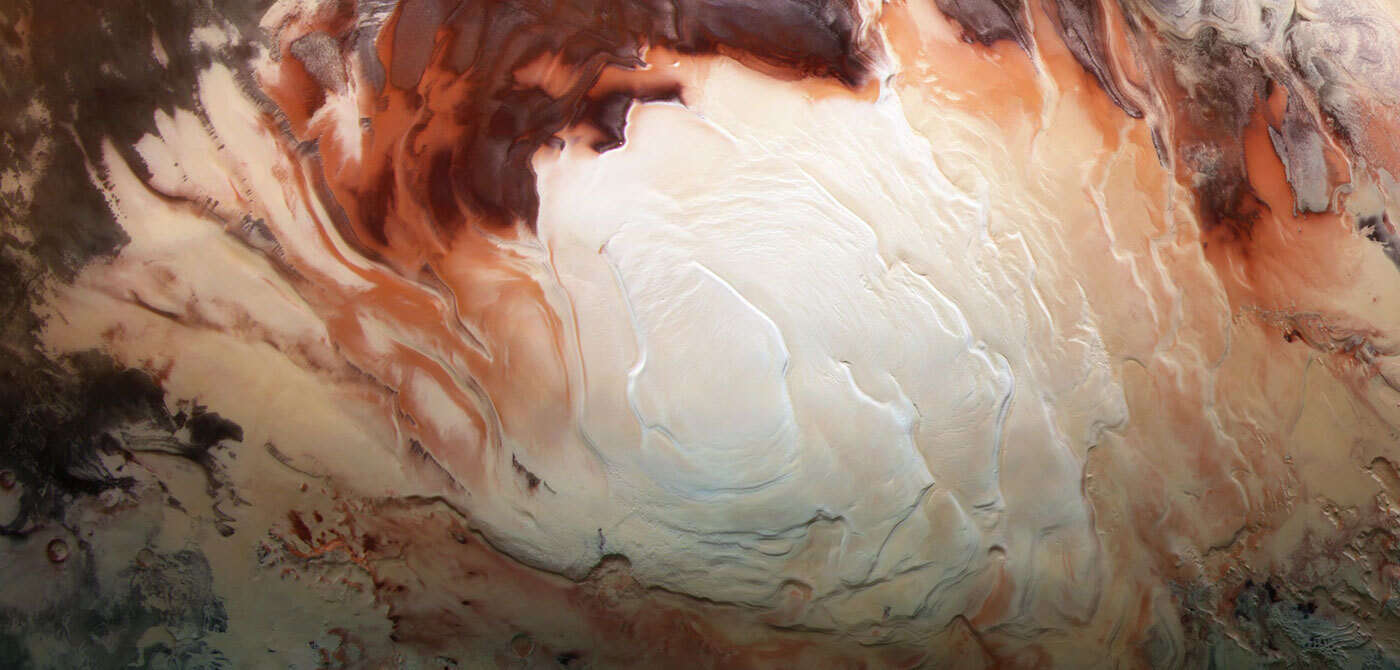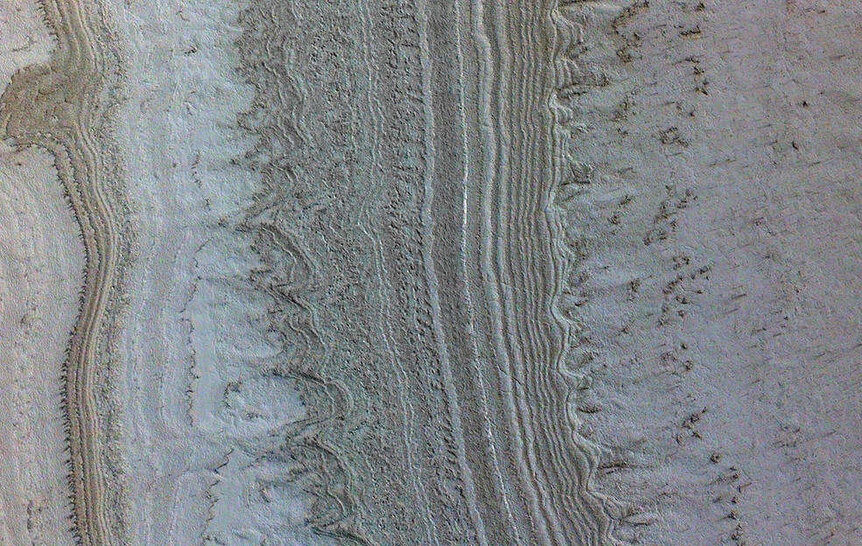Create a free profile to get unlimited access to exclusive videos, sweepstakes, and more!
So about those subsurface lakes on Mars, are they really water or… something else?

Mars is thought to have once been another Earth that was much more habitable than the barren desert of dust and ice it is today. Unfortunately, no liquid water on the surface seemed to have survived the intense irradiation it went through.
When scientists first believed they had found evidence for what could be subsurface lakes deep below the ice and frozen ground of the Martian south pole, it went viral, but those lakes are probably not what they seem. They were suspected to be lakes of liquid water because of the way radar signals were interpreted. Also, water in its liquid form will sublimate, or vaporize instantly, on the surface of Mars, so it has to be underground if it exists.
New research has now found that what were thought to be lakes are most likely made of anything but liquid water. Another look at the radar signals from ESA’s Mars Express MARSIS (Mars Advanced Radar for Subsurface and Ionospheric Sounding) instrument told Aditya Khuller of Arizona State University, who led a study recently published in Geophysical Research Letters, that there was not enough heat.
“We do not believe that the bright subsurface reflectors represent liquid water, because it would require anomalously high amounts of heat to allow liquid water to be stable at these locations,” he told SYFY WIRE. “In addition, there are some places where the bright reflectors extend close to the surface, where it is too cold for even brines to be stable in liquid form.”
MARSIS uses radar to find out what is floating in the atmosphere of Mars and what lies beneath its ruddy surface. The main mission of MARSIS is to seek out water that might be hiding up to 3 miles deep. It does this by throwing radio waves at an area and analyzing their “echoes” when they bounce back. While ice signals are similar to rock, liquid water near the surface is supposed to send back a much stronger signal. These unusually bright signals almost had scientists convinced that there really was a subsurface water deposit at the south pole.
These hypothetical lakes had to be tested somehow. Along with NASA JPL scientist Jeffrey Plaut, Khuller analyzed the radar echoes MARSIS had beamed back from the southern polar ice cap over a stretch of 15 years — all 44,000 of them. Turned out the signals were in areas way too close to the surface for it to be warm enough for liquid water to exist. Even perchlorates, salts commonly found on Mars andmade of four oxygen atoms and one chlorine atom, could not lower the freezing point of water enough for it to stay liquid despite excitement over the radar.
Someone had to mimic the conditions of the extreme south of Mars in a lab to find out what was really going on. That someone was Isaac Smith of York University in Canada, who knew he was on to something when he considered smectites, which may look like rock but are actually clays that had been formed by liquid water on Mars billions of years go. After discussing the possibility with Khuller, Plaut and several other scientists, he managed to duplicate freezing Martian conditions in a lab where he could test the smectite hypothesis with radar.
Smith used smectite samples from Earth which he first immersed in liquid nitrogen to freeze them to -58 degrees Fahrenheit. While not exact, this is close to how cold it gets at the Martian South Pole, and when he put them in a cylinder made for measuring interactions with radar signals, things checked out. It was a nearly perfect match for the MARSIS observations. Khuller, however, still believes there is more investigation ahead.
“The experiments were performed at temperatures higher than predicted to be present under the south pole at these locations, so future experiments should aim to replicate the temperatures (and potentially even pressures) more closely to see if these more representative conditions alter the conclusions,” he said.
While only smectites were tested this time, the entire composition of the Martian south pole needs to be recreated for completely accurate results. The region is not only made of smectite. There have only traces of clay found in Martian rocks studied by rovers and orbiters, and revisiting the experiment with other substances might show that something else was causing radar reflections that were so unusually bright.
“Future work might benefit from exploring clay-basalt (since most of Mars’ crust is basaltic) mixtures in more detail, because the amounts of clay within martian rocks studied thus far is generally low,” Khuller said. “This may or may not be enough clay to produce the bright reflections being observed.”















